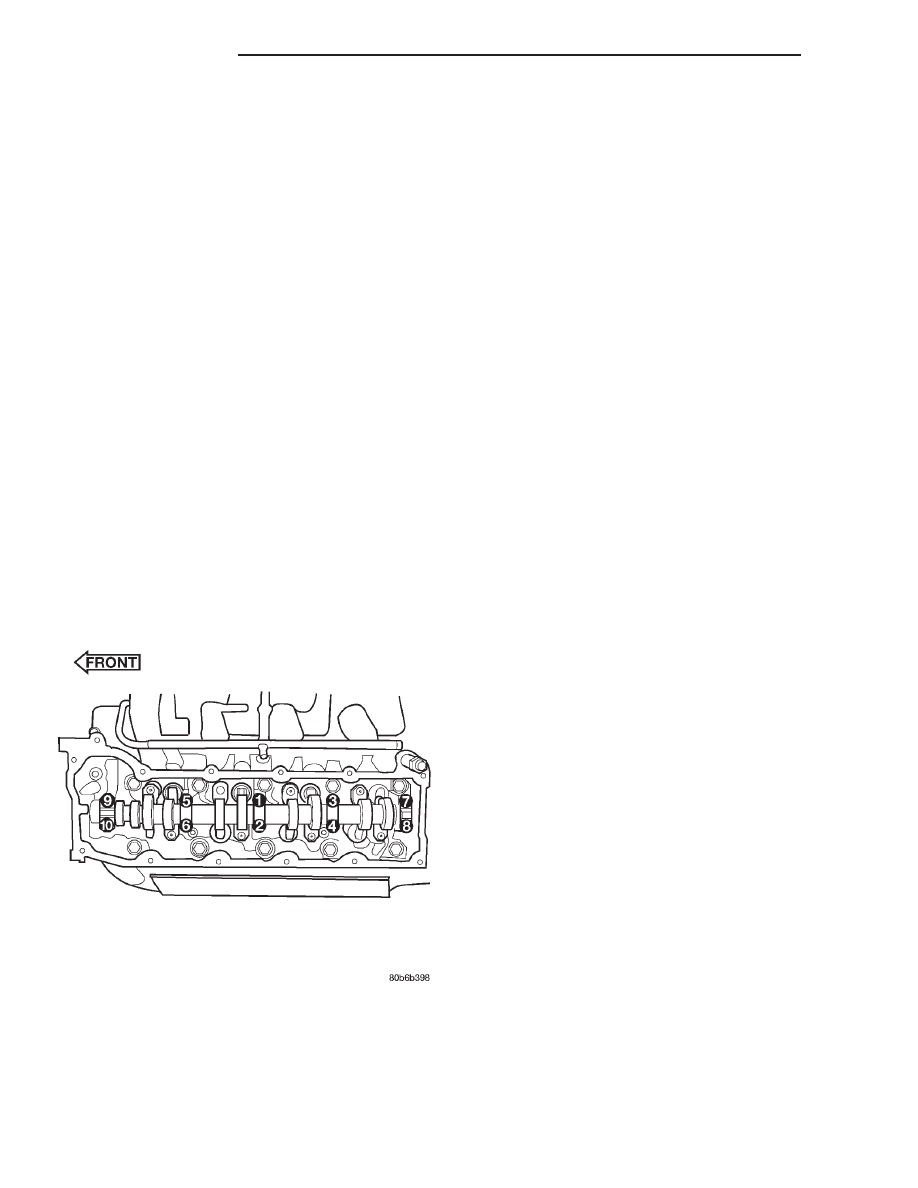Dodge Dakota (R1). Manual - part 492

CAUTION: DO NOT STAMP OR STRIKE THE CAM-
SHAFT BEARING CAPS. SEVERE DAMAGE WILL
OCCUR TO THE BEARING CAPS.
NOTE: When the camshaft is removed the rocker
arms may slide downward, mark the rocker arms
before removing camshaft.
(10) Remove the camshaft bearing caps and the
camshaft.
INSTALLATION
(1) Lubricate camshaft journals with clean engine
oil.
NOTE: Position the right side camshaft so that the
camshaft sprocket dowel is near the 10 o’clock
position, This will place the camshaft at the neutral
position easing the installation of the camshaft
bearing caps.
(2) Position the camshaft into the cylinder head.
(3) Install the camshaft bearing caps, hand tighten
the retaining bolts.
(4) Working in 1/2 turn increments, tighten the
bearing cap retaining bolts starting with the middle
cap working outward (Fig. 38).
(5) Torque the camshaft bearing cap retaining
bolts to 11 N·m (100 in. lbs.).
(6) Position the camshaft drive gear into the tim-
ing chain aligning the V8 mark between the two
marked
chain
links
(Two
links
marked
during
removal) (Fig. 39).
NOTE: When gripping the camshaft, place the pliers
on the tube portion of the camshaft only. Do not
grip the lobes or the sprocket areas.
(7) Using the adjustable pliers, rotate the cam-
shaft until the camshaft sprocket dowel is aligned
with the slot in the camshaft sprocket . Install the
sprocket onto the camshaft (Fig. 40).
CAUTION:
Remove
excess
oil
from
camshaft
sprocket bolt. Failure to do so can cause bolt over-
torque resulting in bolt failure.
(8) Remove excess oil from camshaft sprocket bolt,
then install the camshaft sprocket retaining bolt and
hand tighten.
(9) Remove timing chain wedge special tool 8350
(Fig. 35).
(10) Using Special Tool 6958 spanner wrench with
adapter pins 8346 (Fig. 41), torque the camshaft
sprocket retaining bolt to 122 N·m (90 ft. lbs.).
(11) Install the camshaft position sensor (Fig. 36).
(12) Install the cylinder head cover (Refer to 9 -
ENGINE/CYLINDER
HEAD/CYLINDER
HEAD
COVER(S) - INSTALLATION).
Fig. 38 Camshaft Bearing Caps Tightening
Sequence
9 - 156
ENGINE 4.7L
AN
CAMSHAFT(S) - RIGHT (Continued)